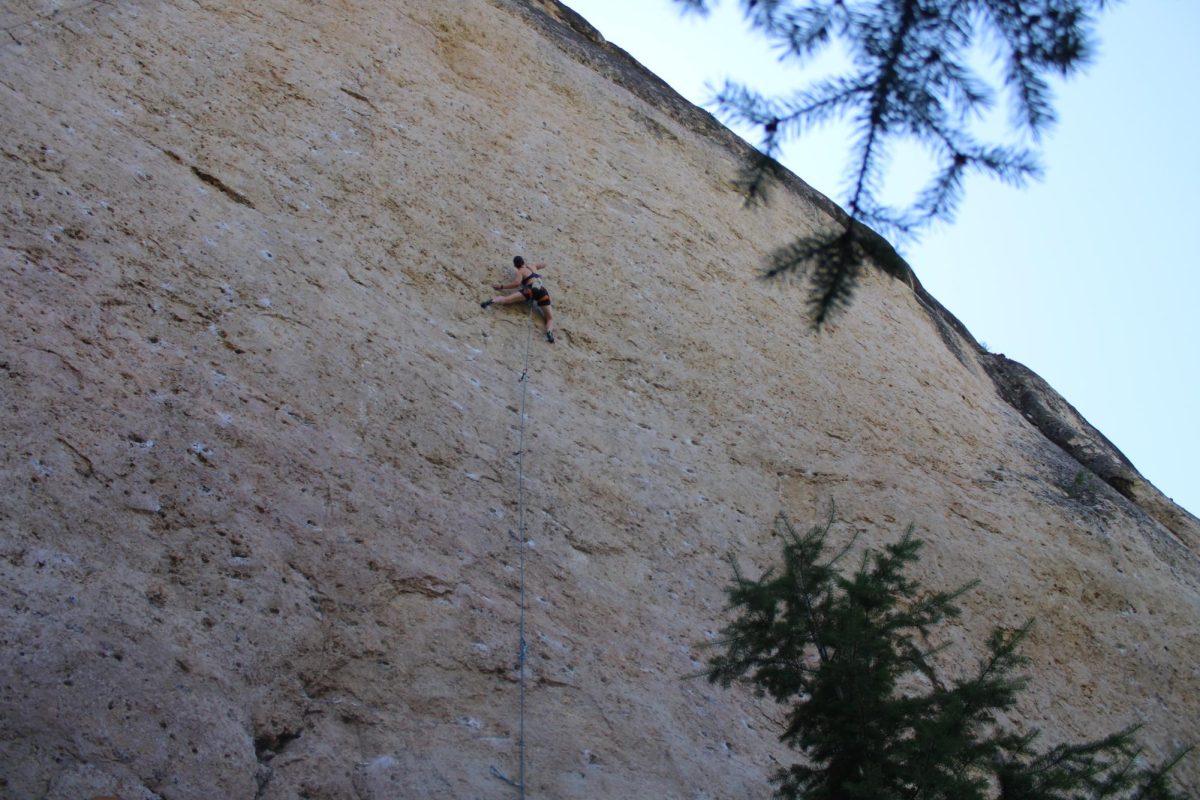As I sit down to turn my thoughts into words, I’m reminded of a phrase I read once. It goes like this: “take it easy, but take it.” This sentence more or less sums up what’s been on my mind this summer. Between a job, an internship, climbing, and the base human desire to chill out, I’ve been reflecting on the balance we all strive to find between responsibility and enjoyment.
When it comes to climbing, however, this meditation has been slightly different. In this case, I have been more concerned with the harmony between grit, or “try-hard,” and mellow.
As a kid, I lived for the summer. School was out and no other responsibilities demanded my attention. Rather, my attention was ripped and tugged between a random assortment of whims and passions that required no schedule and no discipline. Ambitions grew as fast as wildfires and died out nearly as quickly. I was a kid of a thousand interests, but didn’t take the time to truly explore any of them. The tedium of trying hard to improve caused the claws of these enthusiasms to make only shallow indents, too shallow to leave a mark.
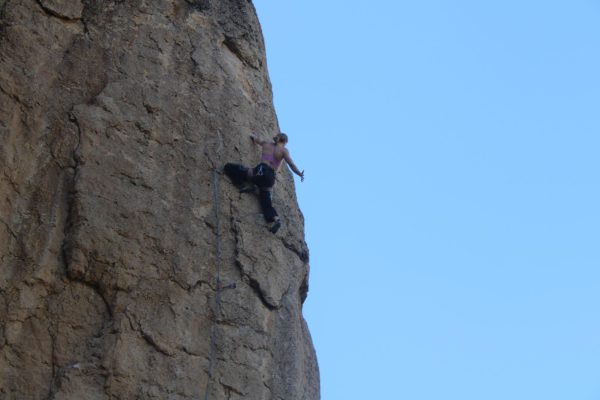
But then I found rock climbing. It instantly sunk its claws so deep into my squirming, noncommittal psyche that I couldn’t just let it go. The wildfire grew fast and bright but did not burn itself out. It slowed at times, sure, but was always revitalized by some new spark born from the fire itself. A positive feedback loop that, as far I know, has no end. The maelstrom of cursory ambitions in my brain swiftly became more honed and specific. Not entirely silenced, but molded to accommodate this new, great passion.
My lifelong pattern of loose convictions and “willynilly-ness” was no longer sufficient. I wanted to improve and dive deeper into this sport. To do that I had to incorporate discipline and structure into my training, the very things that had killed my passions in the past. This came at a time in my life of increasing responsibility and independence, as well, and I saw many of the same bores from this transition bleed over into my climbing regiment: organization, intention, scheduling. I witnessed the beginning of the end of another shotgun foray into a new hobby.
But, surprisingly, the claws didn’t loosen their grip.
A tentative mutualism was founded between the two things that I saw as forever opposed: discipline and enjoyment. The discipline aided me in improving and deepening my enjoyment. Then the enjoyment stoked the fire, allowing for the drag that discipline had on my psych. I was astonished; this had never happened for me in the past. But then again, the universe existed for nine billon years before the first living organisms existed on Earth, and look at us now.
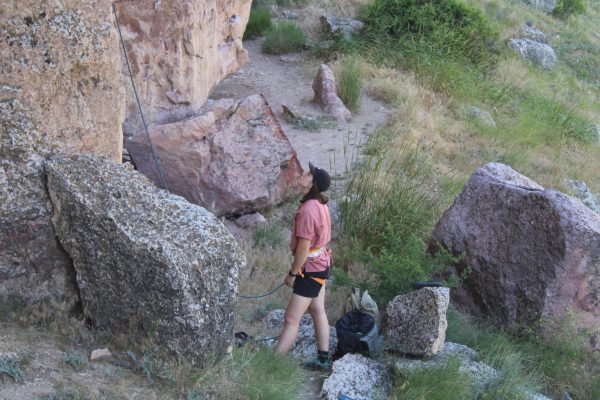
In the shadow of this wider, overarching relationship, was an affair lesser known to me. Something that has always been there, but something that I’ve overlooked. Something I thought I had figured out. Grit and mellow mingled in an unseen knot, indelibly tied while forever being contradictory. And it seems, at least to me, that what really brought this marriage to the light was my venture into the world of sport climbing this summer.
I will now interrupt the flow of this article for a brief intermission to explain an aspect of climbing some readers may (or may not) be unaware of…
Rock climbing can be split into a number of disciplines, two of the most popular being bouldering and sport climbing. Bouldering, as its name suggests, involves climbing on smaller, standalone boulders. You are protected by a layer of pads placed on the ground beneath you. This discipline is typically characterized by shorter, more powerful routes—though with the proclivity of bouldering as a sport, there is a wide variety of styles of boulders, and this is not always the case.
Sport climbing, on the other hand, involves much longer routes on much larger cliffs. You are protected by a rope—which you are tied into and which connects to your belayer—and a network of carabiners that allows you to take safe falls even as you climb higher and higher. This discipline is more focused on one’s level of endurance. The difficulty comes not from any one singular move, but from the sheer amount of moves one has to execute.
Alright, back to the mostly mediocre piece you were reading before…
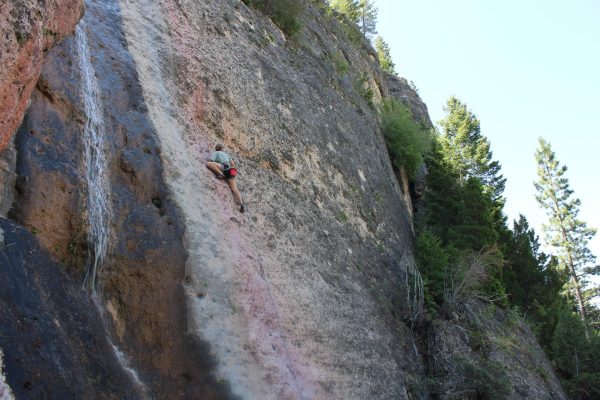
For all of my climbing journey, I have almost exclusively been a boulderer. I can count on one hand the number of times I climbed using a rope before June of this year. I can even tell you—it was three. It just never seemed as appealing to me as bouldering, and, deep down, I was afraid of getting more than 20 feet off the ground.
This summer, however, in an attempt to become more well-rounded and experience other aspects of the sport that I love, I decided to give it a real shot.
What I have found, and what has made me reflect, is that it’s hard to try hard on a rope, at least for me. I got over the fear of it all pretty quickly, but I would get to the crag and not want to climb more than a couple of pitches. There was a mental block that I experienced on a rope that I didn’t experience when I bouldered. It was like I simply didn’t want to try. I had no grit. There are a couple of reasons why this could be. One is that sport climbing crags are typically more of a novelty area to me. I have bouldered so much in Little Cottonwood at this point that I am able to focus on climbing without getting distracted by the environment around me. Same goes for Moe’s Valley, Red Rock, and a couple other areas.
But the places I’ve been sport climbing in, such as American Fork Canyon, Maple Canyon, Ten Sleep, etc. are all so beautiful and new to me (at least in the context of climbing) that all I want to do is kick my shoes off, sit down, and enjoy the breeze. This obviously isn’t very helpful when your self worth is tied to being able to get to the top of a rock in the most difficult way imaginable. I approached sport climbing with too much mellow. I didn’t think such a thing was even possible.
The results I wanted weren’t what I was getting. I had to make a conscious decision to grit my teeth and try hard. This wasn’t something I experienced when bouldering. It usually came very naturally, and I could try hard without even noticing. Having to make the dedicated effort to balance these two forces, however, caused me to be more intentional in the way I approached an attempt.
I stayed easygoing as I walked to the base of my selected route. Like a panther stalking prey, I moved slowly, breathed slowly, thought slowly as I tied in. I ran through individual moves in my head as I grasped the first holds. Then my feet left the ground.
As soon as I was properly climbing, I consciously flipped the switch. I began trickling in grit and try-hard as I climbed. I stayed focused, not thinking about the crag snacks that I brought, but staying present and focusing on the flow of the climb. The way my feet moved, and then my hands. My brain and stomach bubbled as I approached the crux of the pitch. Like a rising crescendo, I became more and more focused as I entered the most difficult section. The grit overtook the mellow in this moment, taking the wheel and sending me through this section of uncertainty. I breathed quick, strained breaths. My forearms beat in tandem with my heart, heavy as lead.
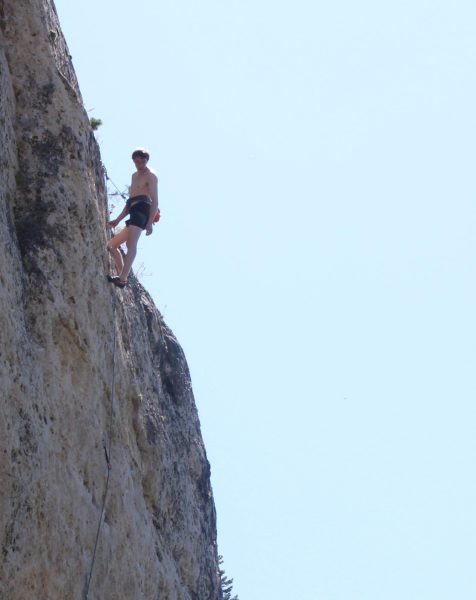
Once I was through and at a resting point, I slowed my breathing and closed my eyes. I was past the hardest part, yes, but had more yet to climb. I eased up on the grit, allowing the mellow to put a hand on the wheel. In combination, they propelled me to the top of the route. The grit allowed me to ignore and climb through the pump. The mellow gave me the composure needed to not punt the easy finale.
At the chains, I flipped the switch once again. No longer needing to try, I just hung, suspended in the air, appreciating the climb. And I once again thought about the snacks that I brought.
There is a time and a place to take it easy. I love taking it easy. It might be my favorite thing to do. But there is also a time and a place when we need to take it full on. When we need to rise to the occasion and accomplish the task at hand. This has been relevant to me when it comes to sport climbing, but it can be applied to all kinds of aspects of outdoor sports. Grit and mellow, when given a chance, can work beautifully in tandem. Two unlikely partners in one electric tango.


